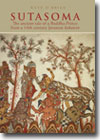| Our Publications | ||
| Books by Title | ||
| Books by Author | ||
| Books by Country | ||
| E-books | ||
| About | ||
| Orchid Press E-books | ||
| Distributed E-books | ||
| Our Bookshop | ||
| About Us | ||
| Browse Shop | ||
| How to Buy | ||
| Contact Us | ||
| WE BUY BOOKS AND LIBRARIES | ||
|
||
Book Reviews

Sutasoma:
The ancient tale of a Buddha-Prince from a 14th century Javanese kakawin
Translated with commentary by
Kate O’Brien
2008, 294 pp., 22 col. plates & 9 figures, index, 24.5 x 17.5 cm., hardcover.
ISBN-10: 974-524-107-5 $45.00
ISBN-13: 978-974-524-107-7
Book review by Pamela Gutman
(Journal of The Asian Art Society of Australia, June 2009, Vol. 18, No.2, p.23)
Kate O’Brien is well-known to TAASA members for her scholarly yet accessible elucidation of Tantric themes in the literature, art and architecture of Java and Tibet. Many will recall her lectures on Candi Jago as an illustration of the theory of the union of Means and Wisdom in the attainment of Enlightenment. Her latest work relates the story of Sutasoma as told in Mpu Tantular’s epic Old Javanese Buddhist kakawin or poem, written in the 14th century at the height of the Majapahit empire, and discovers, again, the underlying theme of Means and Wisdom.
The poem relates the life of prince Sutasoma, born an incarnation of the Jina-Buddha Wairocana. It follows both his spiritual journey to enlightenment and his temporal journey through marriage, kingship and eventual victory over the mighty, world-threatening demon Porusada. Sutasoma’s subduing of the demon is well-known throughout Buddhist Asia and over time many variations have evolved. In this epic version the poet has elaborated the original story and added new characters and episodes, setting the tale in a Javanese milieu and imbuing it with a uniquely Javanese world-view. Apart from relating Sutasoma’s journey for enlightenment it is also a love story, and a moral story telling of the fight of righteous kingship against evil. A series of minor wars leads to an eventual showdown, a world-threatening conflict and conflagration which would do justice to many of the scenes in the movie epic, The Lord of the Rings. O’Brien presents an updated and complete translation which presents the reader with a highly approachable and lively rendition of this epic, comparable in complexity and scale to that of the Ramayana, yet significantly less known or understood.
O’Brien’s accompanying analysis reveals a fascinating aspect of the poem, until now not fully explored. Aside from its function to elucidate the compatibility of Buddhahood and kingship, it also reveals within its verses what amounts to a literary mandala, as complex and as philosophically rich as the beautiful mandala images of Tibetan Buddhism, yet firmly rooted in the Javanese milieu of the Majapahit polity which gave rise to this version of the ancient tale. It is this literary mandala that is the path to Sutasoma’s enlightenment, and this in turn the key to his success as a World Protector and Universal Monarch.
Today the Sutasoma is still studied by “masaban” groups as it has been for many generations. It continues to be a popular subject in the art of Bali. O’Brien has selected her profuse illustrations from those adorning the ceiling of the Bale Kambang of the Taman Gili, the water garden of the palace at Klungkung in Bali, as well as from the modern repertoire of Balinese painting. The Tantric aspects of the text are explained through diagrams and illustrations of mandalas in Tibet and Ladakh. Sutasoma is recommended reading not only for specialists but for those returning to Bali who wish to better understand the literary and religious background to its incomparable culture.
Read a review from Indonesian and Malaysian Affairs [More Orchid Press Reviews]
PO Box 70, Trinity TB, NL, A0C 2S0, Canada
Telephone: +1 709-330-4703